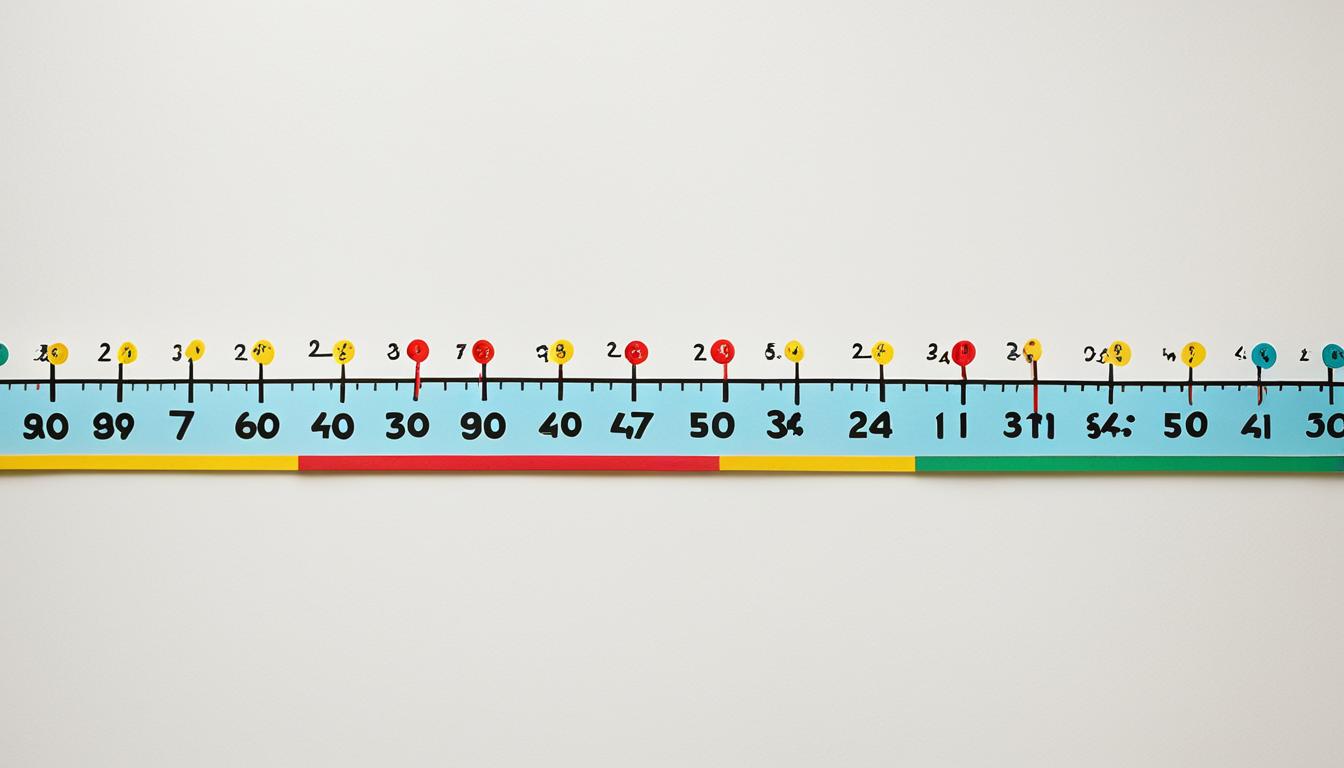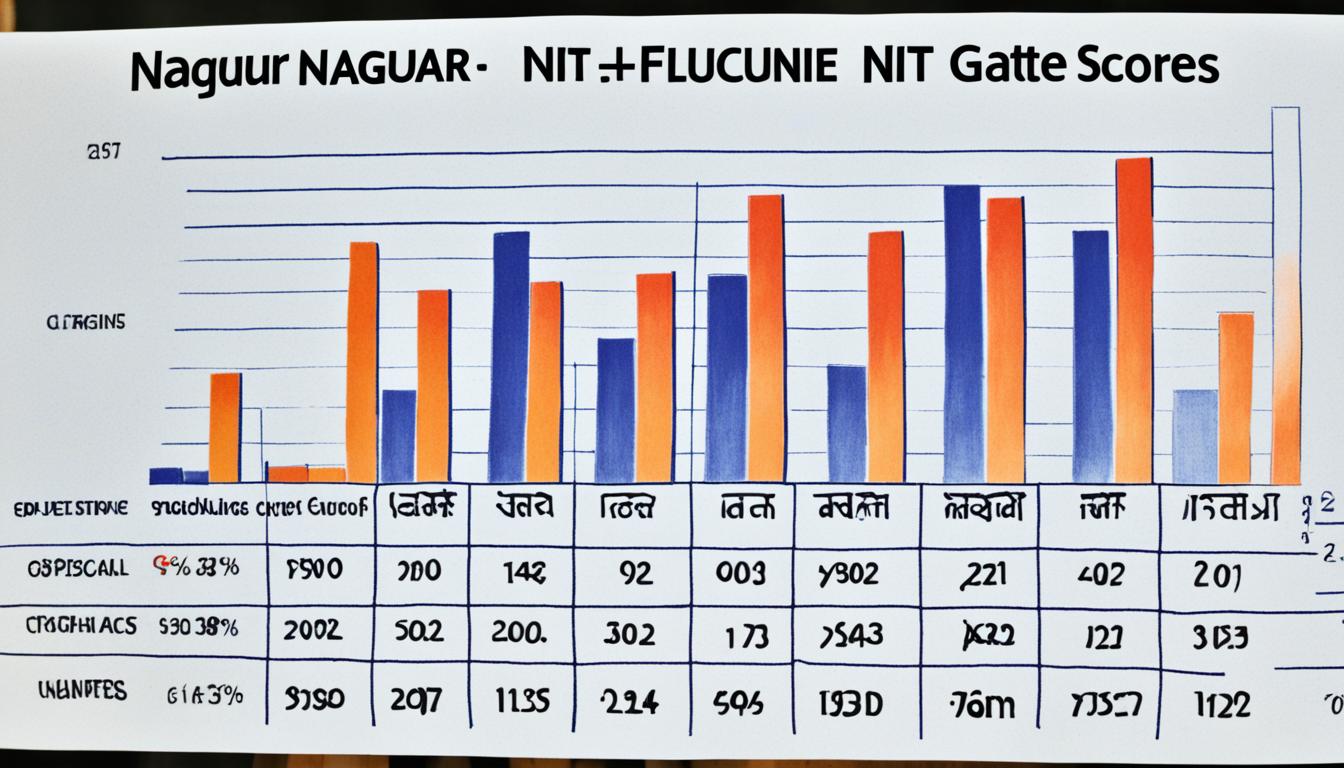Welcome to our comprehensive guide on rational numbers. In this article, we will explore the concept of rational numbers and simplify its understanding. From fractions to decimals, we will cover all the essential aspects that will equip you with the knowledge to work with rational numbers effectively.
Rational numbers are a fundamental component of the number system. They encompass fractions and their decimal equivalents, allowing us to express quantities that can be represented as a ratio of two integers. By grasping the concept of rational numbers, you’ll be able to apply this knowledge in various real-life scenarios, ranging from finance to statistics.
To make the topic more engaging and easy to follow, we will illustrate key concepts with practical examples. By the end of this article, you will have a solid foundation in rational numbers, empowering you to confidently tackle mathematical operations involving fractions, decimals, and more.
Key Takeaways:
- Rational numbers encompass fractions and their decimal equivalents.
- Understanding rational numbers is essential for practical applications in various fields.
- By the end of this article, you will have the knowledge needed to perform operations with rational numbers.
- Rational numbers are represented as ratios of two integers.
- Applying the concept of rational numbers simplifies complex calculations and comparisons.
What Are Rational Numbers?
In this section, we will introduce the concept of rational numbers and explain their place within the number system. To understand rational numbers, it’s essential to first grasp the broader category of real numbers. Real numbers encompass both rational numbers and irrational numbers, which are numbers that cannot be expressed as simple fractions.
Rational numbers, on the other hand, can be expressed as fractions, where both the numerator and denominator are integers. They include numbers such as 1/2, 5/4, and -3/7. Rational numbers can also be represented in decimal form, either as a finite decimal or a repeating decimal. For example, 1/3 can be written as 0.3333…, where the 3s continue indefinitely.
One way to think about rational numbers is that they can be written as the ratio or quotient of two integers. This is where the term “rational” comes from, as it signifies a relationship between two quantities. Unlike irrational numbers, rational numbers can be precisely expressed and understood within the framework of the real number system.
“Rational numbers are the building blocks of mathematical calculations, providing a foundation for working with real-world quantities and measurements.”
To better illustrate the distinction between rational and irrational numbers, let’s consider the square root of 2. This number, denoted as √2, is an irrational number because it cannot be expressed as a simple fraction or a decimal that terminates or repeats. Its decimal representation is approximately 1.41421356…
In summary, rational numbers are a fundamental subset of real numbers that can be expressed as fractions or decimals. They differ from irrational numbers, which cannot be expressed as simple fractions. Understanding the concepts and properties of rational numbers is essential for a solid foundation in mathematics and real-world applications.
Real Numbers and Their Subsets
To further understand the relationship between rational numbers and real numbers, let’s take a closer look at the number system hierarchy:
| Number System | Description |
|---|---|
| Natural Numbers (N) | The set of positive integers: 1, 2, 3, … |
| Whole Numbers (W) | The set of non-negative integers: 0, 1, 2, 3, … |
| Integers (Z) | The set of positive and negative whole numbers: …, -3, -2, -1, 0, 1, 2, 3, … |
| Rational Numbers (Q) | The set of numbers that can be expressed as a ratio of integers: fractions and decimals |
| Real Numbers (R) | The set of all numbers, including rational and irrational numbers |
As shown in the table above, rational numbers (Q) are a subset of real numbers (R). Real numbers encompass all possible numbers, including rational and irrational numbers. Rational numbers play a vital role in various mathematical calculations, scientific measurements, and real-world applications.
Representing Rational Numbers
When working with rational numbers, it is essential to understand how to represent them in different forms. In this section, we will explore two common methods of representing rational numbers: decimal form and number line.
Decimal Form
One way to represent rational numbers is in decimal form. This is particularly useful when dealing with fractions, as it provides a convenient and easily understandable representation. To express a fraction as a decimal, simply divide the numerator by the denominator.
For example, if we have the fraction 3/4, we divide 3 by 4, which gives us the decimal 0.75.
The decimal form allows us to easily compare rational numbers and perform operations such as addition, subtraction, multiplication, and division.
Number Line
Another way to represent rational numbers is on a number line. A number line is a visual tool that helps us understand the order and magnitude of different numbers. By plotting rational numbers on a number line, we can easily compare their values and identify their relationships.
Let’s consider the rational number -2/5. On a number line, we would plot this number between -1 and 0, closer to 0.
A number line also helps us visualize the concept of an absolute value, which is the distance of a number from zero.
| Rational Number | Decimal Form | Number Line |
|---|---|---|
| 1/2 | 0.5 | |
| 3/4 | 0.75 | |
| -1/3 | -0.333… |
By using decimal form and number lines, we can effectively visualize and work with rational numbers, gaining a deeper understanding of their properties and relationships.
Equivalent Fractions and Simplifying
Understanding equivalent fractions is crucial when working with rational numbers. By finding and using equivalent fractions, we can simplify complex fractions and express rational numbers in their simplest form. Let’s explore how to achieve this.
Finding Equivalent Fractions
To find equivalent fractions, we multiply or divide the numerator and denominator by the same non-zero number. This process does not change the value of the fraction but allows us to represent it differently.
For example, consider the fraction 3/4. By multiplying both the numerator and denominator by 2, we get an equivalent fraction as 6/8. Similarly, dividing both the numerator and denominator by 2 gives us another equivalent fraction, 3/8. These fractions represent the same rational number but have different numerical forms.
Simplifying Complex Fractions
Complex fractions can be simplified by using equivalent fractions. Let’s take the fraction 12/16 as an example. To simplify, we can find an equivalent fraction with a smaller numerator and denominator.
12/16 is equal to 6/8 which is equal to 3/4.
By simplifying complex fractions, we can express rational numbers in the simplest form, making them easier to work with and understand.
| Complex Fraction | Simplified Fraction |
|---|---|
| 12/16 | 3/4 |
| 18/24 | 3/4 |
| 20/25 | 4/5 |
By simplifying these complex fractions, we can express the rational numbers more concisely and clearly. This simplification process is an essential step in dealing with rational numbers effectively.
With a solid understanding of equivalent fractions and simplifying, you can confidently work with rational numbers, expressing them in the simplest form and applying them to various mathematical concepts and problems.
Operations with Rational Numbers
Now that we have a solid understanding of rational numbers, it’s time to dive into operations with them. By performing addition, subtraction, multiplication, and division of rational numbers, you will develop the skills to solve various mathematical expressions involving fractions. Let’s explore these operations in more detail:
Addition and Subtraction
In rational number operations, addition and subtraction are similar processes. To add or subtract rational numbers, you need to ensure they have a common denominator. Once you have aligned the fractions, simply add or subtract the numerators while keeping the denominator unchanged. Let’s see an example:
| Rational Numbers | Addition | Subtraction |
|---|---|---|
| 1/4 | + | – |
| 3/8 | = 7/8 | = -1/8 |
| 1/2 |
Multiplication
Multiplying rational numbers involves multiplying their numerators and denominators. To simplify the result, you can reduce the fraction to its simplest form. Here’s an example:
| Rational Numbers | Multiplication |
|---|---|
| 3/4 | * |
| 5/6 | = 15/24 |
Division
Dividing rational numbers requires multiplying the first fraction by the reciprocal or inverse of the second fraction. This means flipping the numerator and denominator of the second fraction and then performing multiplication. Let’s take a look:
| Rational Numbers | Division |
|---|---|
| 2/3 | / |
| 4/5 | = 10/12 |
By mastering these operations, you will be able to confidently solve mathematical expressions involving rational numbers. Practice these techniques to reinforce your understanding and fluency with rational number operations.
Comparing Rational Numbers
Comparing rational numbers can be done in various ways. In this section, we will focus on comparing them using their decimal forms. By representing rational numbers as decimals, we can easily determine which number is greater or lesser than another.
To compare rational numbers in decimal form, we follow these steps:
- Step 1: Convert the given rational numbers into decimal form. This can be done by dividing the numerator by the denominator.
- Step 2: Compare the decimal representations. Look at the whole number parts first. If they are different, the number with the higher whole number part is greater. If the whole number parts are the same, move on to the decimal parts.
- Step 3: Compare the decimal parts by looking at each decimal place value from left to right. The first differing digit determines which number is greater. If the decimal parts are identical, the numbers are equal.
Let’s take an example to illustrate this process:
Example:
Compare the rational numbers 3/4 and 2/3.
To compare 3/4 and 2/3 in decimal form:
- Step 1: Convert 3/4 and 2/3 into decimal form.
| Rational Number | Decimal Form |
|---|---|
| 3/4 | 0.75 |
| 2/3 | 0.666… |
As shown in the table above, 3/4 is equal to 0.75 and 2/3 is equal to 0.666… (repeating). Now, we can move on to the next step.
- Step 2: Compare the whole number parts.
Both 0.75 and 0.666… have zero whole number parts, so we move on to the decimal parts.
- Step 3: Compare the decimal parts.
Looking at the decimal parts, we can see that 0.75 is greater than 0.666… because the digit in the hundredths place (5) is greater than the corresponding digit (6) in 0.666…. Therefore, 3/4 is greater than 2/3.
By following these steps, we can effectively compare rational numbers using their decimal forms. Practice this method with different rational numbers to enhance your understanding and proficiency in comparing them.
Applications of Rational Numbers
In everyday life, rational numbers play a crucial role in various practical applications. Understanding how rational numbers are used in different contexts can enhance our problem-solving abilities and increase our mathematical literacy. Let’s explore some of the common areas where rational numbers are applied:
- Measurements: Rational numbers are fundamental for representing measurements in fields such as construction, engineering, and science. Whether it’s measuring length, weight, volume, or temperature, rational numbers enable precise and accurate quantification. For example, converting units between systems or calculating the dimensions of structures relies on the use of rational numbers.
- Financial Calculations: Rational numbers are essential in financial calculations, including budgeting, investments, and accounting. Whether you’re calculating interest rates, percentages, or performing complex financial analysis, rational numbers are at the core of these computations.
- Statistics: Rational numbers are used extensively in statistical analysis and data interpretation. Understanding concepts like averages, ratios, proportions, and percentages requires working with rational numbers. Statisticians often rely on rational numbers when organizing and analyzing data sets in fields such as economics, sociology, and epidemiology.
By recognizing the practical applications of rational numbers in these areas, we can see the immense value they hold in our everyday lives. Being proficient in working with rational numbers not only enhances our mathematical abilities but also enables us to make informed decisions and solve real-world problems more effectively.
So, the next time you measure an ingredient for a recipe, calculate your expenses, or interpret statistical data, remember that rational numbers are the foundation behind these calculations and analyses.
“Rational numbers provide a universal language for measuring, calculating, and understanding the world around us. They offer the precision and accuracy necessary for practical applications in various fields.” – Dr. Sarah Harper, Mathematics Professor
Summary
Rational numbers have diverse applications in our daily lives, ranging from measurements to financial calculations and statistical analysis. They form the basis for precise and accurate quantification, enabling us to navigate the complexities of our world. By recognizing how rational numbers are employed in these practical contexts, we can appreciate their significance and develop a deeper understanding of their role in our lives.
Conclusion
Throughout this article, we have explored the fascinating world of rational numbers. We started by understanding the basics and went on to learn about their representation, simplification, and operations. Now, armed with knowledge about rational numbers, you are ready to tackle mathematical expressions and real-world applications with confidence.
One of the key takeaways from this journey is the importance of equivalent fractions in simplifying rational numbers. By finding and using equivalent fractions, you can express rational numbers in their simplest form, making calculations and comparisons much easier.
Additionally, we discussed the various applications of rational numbers in everyday life. From measurements to financial calculations and statistics, rational numbers play a crucial role in many practical scenarios. Understanding these applications allows you to see the relevance and significance of rational numbers in the real world.
In conclusion, our exploration of rational numbers has laid a strong foundation for your understanding and proficiency in this mathematical concept. By embracing the key concepts and skills covered in this article, you are now equipped with the knowledge and tools to confidently work with rational numbers in any context. So go ahead, explore the world of rational numbers, and unlock the limitless possibilities they bring!
FAQ
What are rational numbers?
Rational numbers are numbers that can be expressed as a fraction, where both the numerator and denominator are integers. They include whole numbers, integers, and fractions.
How are rational numbers different from irrational numbers?
Rational numbers can be represented as a fraction or a terminating or repeating decimal, while irrational numbers cannot be expressed as a fraction and have non-repeating decimal representations.
How can rational numbers be represented?
Rational numbers can be represented as fractions or decimals. Fractions indicate the ratio between two numbers, while decimals provide a clearer numerical representation. Rational numbers can also be plotted on a number line.
What are equivalent fractions and how do they relate to rational numbers?
Equivalent fractions are fractions that represent the same value. They have different numerators and denominators but have the same overall value. Equivalent fractions are essential in simplifying rational numbers to their simplest form.
How can I simplify rational numbers?
To simplify rational numbers, you can find equivalent fractions and reduce them to their simplest form. This involves dividing both the numerator and denominator by their greatest common divisor.
What operations can be performed with rational numbers?
Rational numbers can be added, subtracted, multiplied, and divided. These operations follow similar rules as those for whole numbers and fractions. It’s important to consider the denominators and simplify the results if necessary.
How can I compare rational numbers?
Rational numbers can be compared by converting them to decimal form. By aligning the decimals, you can easily determine which number is greater or lesser. You can also compare rational numbers by finding a common denominator.
What are the real-world applications of rational numbers?
Rational numbers are used in various practical scenarios, such as measurements, financial calculations, statistics, and data analysis. They help in interpreting and understanding real-world quantities and relationships.










